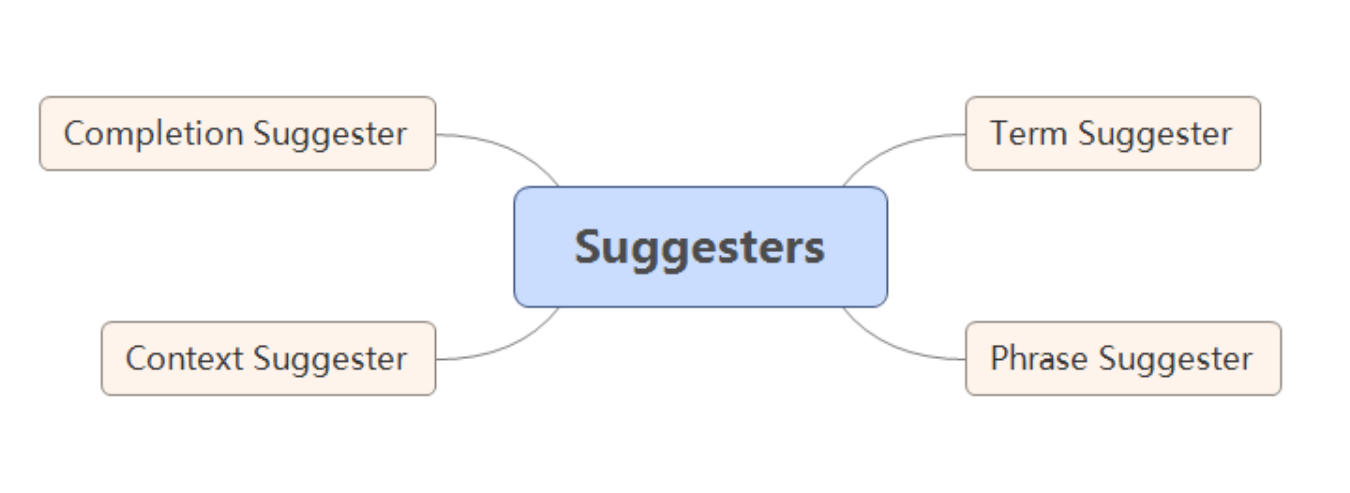
- #Completeion suggester elasticsearch how to
- #Completeion suggester elasticsearch software
- #Completeion suggester elasticsearch code
#Completeion suggester elasticsearch software
"total" : ,Īssume sol for Solution Architect was a typo and you are searching for Software Developers.

By typing eng we don't know for sure that the user is searching for Software Engineer (weight 1), but we can tell for sure it could be an Engineer (weight 2). Weights can be defined with each document to control their ranking. So we have covered the terms Engineer (doc 3) and Software (doc 2) to get a decent suggestion for Software Engineer. The first rank is Engineer, since we do not know if he is really search for Software Engineer we put it on the second rank.Īn input field can have various canonical or alias name for a single term.

PUT jobs/_doc/1?refreshĪ second document: PUT jobs/_doc/2?refreshĪ third document: PUT jobs/_doc/3?refresh We store the following suggestion document. The suggest field is of type completion.We need to define two fields in the job index. We simulate a career network that provides job opportunities. Now we store additionally suggestions in the document and hence we can tweak the rank of the document. In previous methods, we have used the stored text in text and keyword fields. There is also a blog post from Elastic that describes the inner workings of FST.
#Completeion suggester elasticsearch code
For persons with a hungry mind, look at the source code on Github in .CompletionFieldMapper. These data structures are weighted Finite State Transducers in short FST. The suggester uses data structures that enable fast lookups, but are costly to build and are stored in-memory. Hence, completion suggester is optimized for speed. Ideally, auto-complete functionality should be as fast as a user types to provide instant feedback relevant to what a user has already typed in. However, it allows you to have typos, that you can adjust with fuzziness. It is not meant for spell correction or did-you-mean functionality like the term or phrase suggesters. This is a navigational feature to guide users to relevant results as they are typing, improving search precision. The completion suggester provides auto-complete/search-as-you-type functionality.

Will appreciate any pointers.In the previous articles, we look into Prefix Queries and Edge NGram Tokenizer to generate search-as-you-type suggestions. ( This post by Adam Wattis was very helpful in getting me started though). But couldn't find anything like that on SO/blogs/ES docs/elasticsearch-dsl docs after searching for quite sometime. I could come up something like that on my own (by breaking each phrase into words) but it seems counter-intuitive to do that on my own since I'd guess there would already be a default way that the user could further tweak if needed. For example: using each word in the phrase as a term.
#Completeion suggester elasticsearch how to
But my question is how to do that with a ton of records? I was guessing there would be a standard way for ES to automatically come up with a few terms that could be used as suggestions. So I could just put a few terms in the name_suggest = statement above in my code which will match the corresponding field, when searched. Name_suggest = <- # what goes in here?Īs per the ES docs, suggestions are indexed like any other field. Here's my code: class SchoolIndex(DocType):īulk indexing as follows: def bulk_indexing():īulk(client=es, actions=(a.indexing() for a in ().iterator()))Īnd have defined an indexing method in models.py: def indexing(self): After trying to figure this out for a long time, I am not able to figure yet how to bulk index the suggester. I am trying to add a completion suggester to enable search-as-you-type for a search field in my Django app (using Elastic Search 5.2.x and elasticseach-dsl).


 0 kommentar(er)
0 kommentar(er)
